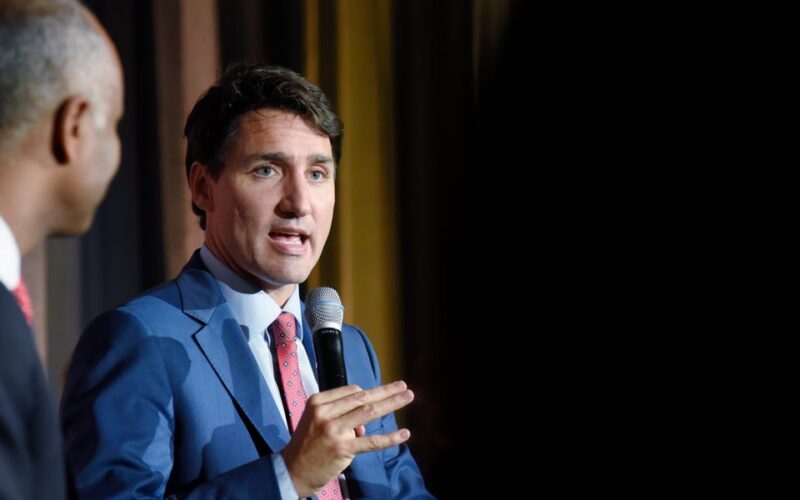- Canada will reduce its target number of new permanent residents in 2025 from 500,000 to 395,000.
- Justin Trudeau said the new target will pause population growth in Canada over the next few years.
- Canada is facing a housing crisis, high living costs, and rising debt.
Canada has announced cuts in the number of immigrants it allows into the country after Prime Minister Justin Trudeau said he “didn’t get the balance right.”
At a news conference in Ottawa, Trudeau took the unusual step of acknowledging his policies had placed a strain on the economy.
He said Canada needed to “pause population growth and let our economy catch up,” adding that while immigration was “essential” for Canada’s future, it must be controlled and sustainable.
Under the new plan, the number of permanent residents arriving in Canada in 2025 will be reduced by 21%, from the initial target of 500,000 to 395,000.
The long-term goal is to reduce that number to 365,000 new permanent residents by 2027.
Slowing down population growth
Canada’s immigration policy is often offered up as a model for other countries, with foreign-born people making up nearly a quarter of its population, according to the Council on Foreign Relations (CFR).
“Immigrants have helped the country counter aging demographics and fuel economic growth, though some Canadians have expressed concern about the increasing strain on housing and social services,” the CFR report said.
Canada’s population hit 41 million in April, with immigration accounting for almost 98% of population growth last year.
Since 2019, annual targets for new permanent resident admissions increased by nearly 41%, according to figures from the Canadian government.
While its population has been growing, Canada has been grappling with a housing crisis, increased costs of living, and rising debt.
Canada’s unemployment rate was 6.5% in September. Meanwhile, housing prices increased prices by more than 355% between 2000 and 2021.
According to a 2023 report by the Canada Mortgage and Housing Corporation, Canada will need 3.5 million more homes on top of what’s already being built to restore affordability.
“These pressures have required us to adapt our immigration levels planning to the current climate,” said Immigration Minister Marc Miller.
“Our annual plans must take into account the capacity to settle, integrate, and retain newcomers—which varies across the country—and monitor system-wide pressures in critical sectors such as housing and health care. At the same time, immigrants make significant contributions to the labor market and are part of the solution.”
In an interview with Bloomberg, Miller said he was not worried about the slowing population growth from immigration cuts having a negative impact on the economy.
“We do have an aging population and whatever you see in the next three years with the neutral population growth is counteracted by the quite large growth that we’ve seen in the last three years,” he said. “If it goes on too long, you have a concern, but we’re not in that situation, far from it.”
The immigration cuts come as Trudeau faces challenges to his leadership. An Ipsos poll conducted between September 5 and 9 put his approval rating at 33%. Two-thirds of Canadians disapproved of his leadership, citing disappointment with the cost of living and housing crisis.
Source link
lol

